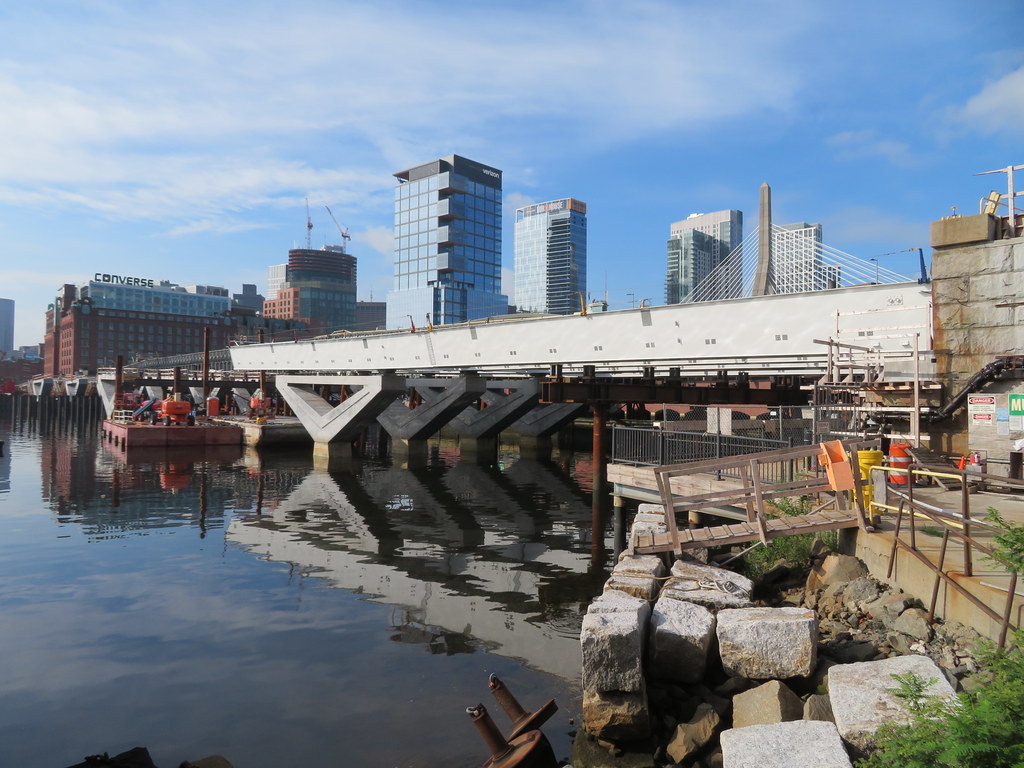Alright, I did some more digging and found out what's going on with the welds. Kind of interesting actually:
- The bridge piers for this project are actually four individual piers at each location. This was a design choice made by the engineer.
- Most large bridges have monolithic bridge piers (the first two at this link) or at least individual piers that are tied together with a concrete cap (the last example at that previous link).
- A monolithic bridge pier provides better resilience against seismic loads.
- The design of the N. Washington St bridge piers can't meet the seismic loads required. So they need to make it up by overengineering the diaphragms that connect the tub girders to meet those loads above the piers.
- So they've got these super thick diaphragms that they are supposed to connect to the tub girders with a full pan weld. Fine, that can be done, just takes a long time to heat up the steel and get it super hot for the entire thickness of the diaphragm.
- Problem comes when the super thick/hot weld cools down. If it cools down too quickly it cracks. That seems to be what's happening here.
So MADOT (who is administering the job on behalf of the COB) flipped out. They completely shut down the project. Curiously, they're kind of treating it as a safety issue - like it would be too dangerous to have anyone working on the bridge. Which is just silly because they let guys crawl all over the project to install the diaphragms in the first place. Anyway, the contractor (JF White) will need to come up with a procedure to keep the welds from cooling down too quickly and cracking. My guess is MADOT will make them prove the procedure works with a sample weld off the bridge. This problem will only be exacerbated in the winter. So we could be in for several months of no progress on the bridge.
TL/DR - There are QA/QC problems with some of the bridge welds. Don't expect any work on this bridge for weeks or months.

 IMG_3386 by Bos Beeline, on Flickr
IMG_3386 by Bos Beeline, on Flickr IMG_3389 by Bos Beeline, on Flickr
IMG_3389 by Bos Beeline, on Flickr IMG_3398 by Bos Beeline, on Flickr
IMG_3398 by Bos Beeline, on Flickr IMG_3393 by Bos Beeline, on Flickr
IMG_3393 by Bos Beeline, on Flickr IMG_3394 by Bos Beeline, on Flickr
IMG_3394 by Bos Beeline, on Flickr IMG_3395 by Bos Beeline, on Flickr
IMG_3395 by Bos Beeline, on Flickr IMG_3396 by Bos Beeline, on Flickr
IMG_3396 by Bos Beeline, on Flickr IMG_3397 by Bos Beeline, on Flickr
IMG_3397 by Bos Beeline, on Flickr IMG_3400 by Bos Beeline, on Flickr
IMG_3400 by Bos Beeline, on Flickr
